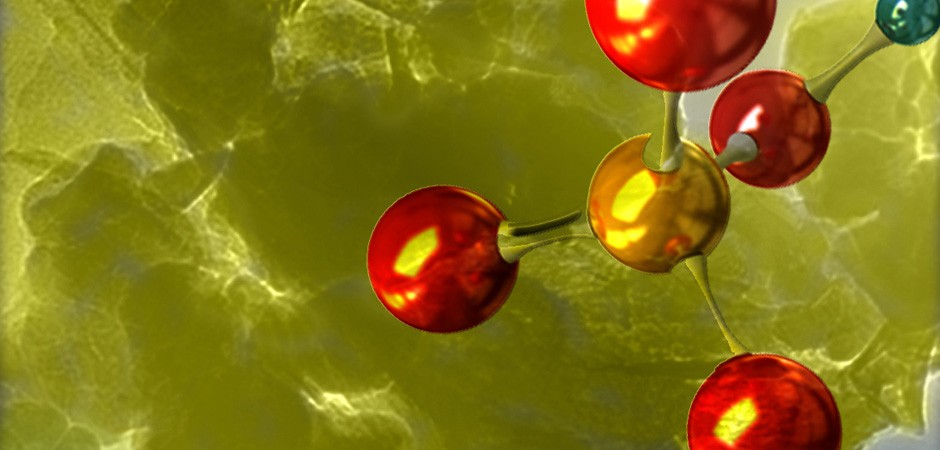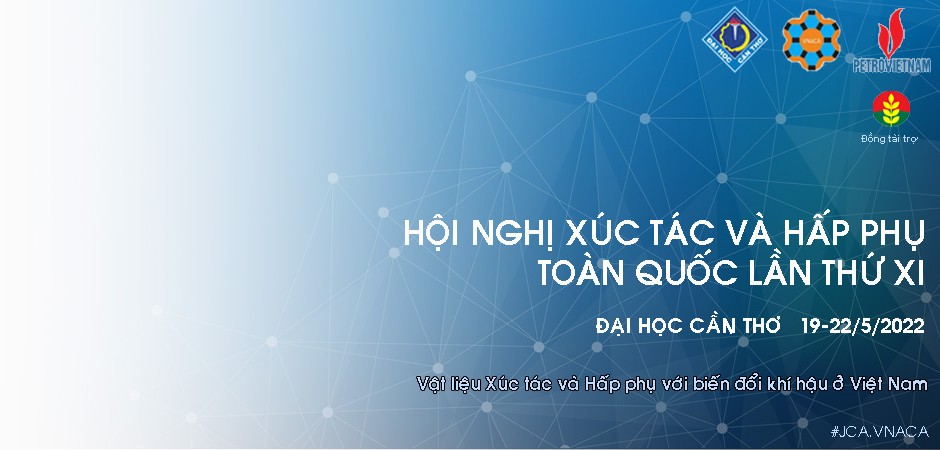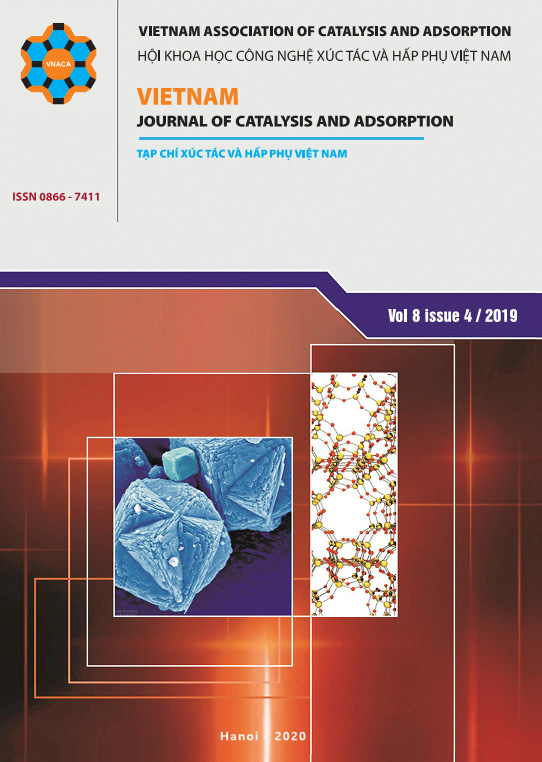
- Details
- Published on 06 August 2020
Preparation of activated carbons from coffee husks by hydrothermal carbonization method and application in Methylene Blue dye removal
Trần Thị Hiền1,2This email address is being protected from spambots. You need JavaScript enabled to view it., Lê Hoàng Anh3 , Phạm Hữu Thiện4, Nguyễn Đình Thành4
1Học viện Khoa học và Công nghệ, Viện Hàn lâm Khoa học và Công nghệ Việt Nam, Số 18 Hoàng Quốc Việt, Cầu Giấy, Hà Nội
2Trường Đại học Công nghiệp Tp. Hồ Chí Minh, Số 12 Nguyễn Văn Bảo, Quận Gò Vấp, Tp. Hồ Chí Minh
3Trường Đại học Khoa học tự nhiên TP. Hồ Chí Minh, Quận 10, Tp. Hồ Chí Minh
4Viện Khoa học Vật liệu Ứng dụng, Viện Hàn lâm Khoa học và Công nghệ Việt Nam, Số 1 Mạc Đỉnh Chi, Quận 1, Tp. Hồ Chí Minh
, Volume 8, Issue 4, pp 1–9
ABSTRACT
Activated carbon obtained from the coffee husk was successfully prepared through the method of hydrothermal carbonization (HTC) with an activating agent 1M H3PO4 at a low temperature of 130°C. The product after the hydrothermal process was subjected to pyrolysis under N2 flow for 2 hours, at a heating temperature of 700°C activated carbon was obtained. The adsorption of methylene blue from activated carbon is described by the Langmuir, Freundlich isotherm model, pseudo-first-order kinetic and pseudo-second-order kinetic model. Activated carbon has a high ability to adsorb methylene blue, the adsorption capacity reached 195.794 mg/g. The results of the adsorption process of activated carbon are described in accordance with the Langmuir adsorption isotherm, the correlation coefficient of the regression equation reached R2 = 0.9995. The possibility of applying a pseudo-second-order kinetic model is possible to describe the process of adsorption of methylene blue on activated carbon. This study shows that hydrothermal carbonization is a promising method for obtaining low-cost activated carbon that can become a highly effective adsorbent.

- Details
- Published on 06 August 2020
Study of preparation activated carbon from macadamia nut shells by chemical activation with H2SO4 in methylene blue treatment application
Dao Minh Trung1, Ngo Kim Dinh2This email address is being protected from spambots. You need JavaScript enabled to view it.
1Thu Dau Mot University
2Vietnam Maritime University
, Volume 8, Issue 4, pp 10–16
ABSTRACT
Study on materials for treating Methylene Blue (MB) wastewater with bioactive activated carbon, prepared from Macadamia shell using H2SO4 activating agent. The research results showed that MB adsorption capacity reaches highest 1g/250.22mg at optimal preparation conditions such as 50% H2SO4:coal = 1:1, temperature of 900°C and 45 minutes firing time. Analysis of infrared spectrum diagram showed that activated carbon prepared from Macadamia shell with H2SO4 activating agent has functional groups -OH, carboxyl functional group C=O, group C-H in CH3 and C link -H. Activated carbon from Macadamia shell with H2SO4 agent achieves the best Methylene Blue color treatment efficiency of 96.11%, corresponding to 201 Pt-Co color at optimal conditions such as pH = 6, dose 1g/L amount and 60 minutes processing time. The research results show that bioactive activated carbon is prepared from Macadamia shell and activated by H2SO4 can handle color in textile wastewater.

- Details
- Published on 06 August 2020
Synthesis of nano hollow Zinc phosphate using soft-template method
Lê Thế NhânThis email address is being protected from spambots. You need JavaScript enabled to view it., Ngô Thanh An, Nguyễn Văn Tuấn, Lâm Hoa Hùng, Nguyễn Quang Long
Khoa Kỹ thuật Hóa học, Đại học Bách Khoa thành phố Hồ Chí Minh, 268 Lý Thường Kiệt, Phường 14, Quận 10, TP HCM.
, Volume 8, Issue 4, pp 17–23
ABSTRACT
This study focuses on the synthesis of nano hollow zinc phosphate using soft - template method through precipitation of Zn(NO3)2 and (NH4)2HPO4. A surfactant of 1,1,1-tris(hydroxymethyl) propane (TMP) was applied as the template for synthesizing process. In addition, n-octanol – a co-surfactant was also added to solution in order to study the interaction between the two surfactants. Two reaction parameters including temperature (0, 15, and 30ºC) and pH 8.5 were respectively examined to figure out the optimal condition for synthesis. The TEM results showed that hollow zinc phosphate nano particles with size of 20 - 50nm formed at the conditions of 0ºC and pH of 8.5. It could be realized that the hollow nano material was favorable to create at low temperatures. Particularly, the presence of n-octanol made the nano hollow zinc phosphate obviously decrease in size.

- Details
- Published on 06 August 2020
Study on treatment and modification of Binh Thuan bentonite by Zn2+ to catalysis for diels-ander reactions of anthracene with anhydride maleic
Trương Minh LươngThis email address is being protected from spambots. You need JavaScript enabled to view it., Mai Thị Thu
Trường Đại học Sư Phạm Hà Nội, 136 Xuân Thủy, Cầu Giấy, Hà Nội
, Volume 8, Issue 4, pp 24–30
ABSTRACT
Accepted: BenLG, BenH and BenZn were preparated by modification from Binh Thuan bentonite . The catalytical characteristic of modificated bentonite were studied by chemical analysis, XRD, TGA-DTG, BET and, BJH. The catalytic activity of modificated bentonite were studied on Diels-Alder reaction between anthracene with anhydride maleic. The structure of reaction product was deteminted by 1H-NMR, 13C-NMR, HSQC, HMBC and NOESY. Some conditions of Diels-Alder reaction were tested and optimal reaction conditions were BenZn, 120 minuts, 170ºC, 80 atm, C6H5NO2.
















